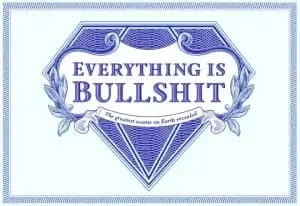I was ecstatic when I posted my 8th grade photo on Facebook for Throwback Thursday and it got more than 100 likes.


Now imagine creating content that regularly gets over 100,000 likes. And 1,000,000′s of views.
Rohin Dhar is the CEO of Priceonomics, an immensely popular startup that creates viral content as its ONLY form of advertising.
Priceonomics makes its money building data-crawling software, which it uses to collect information so businesses and hedge funds can make decisions about investments…but you wouldn’t know that from visiting their website.

The company’s blog is world famous because of its ability to constantly pump out viral content. They’re regularly featured in The New York Times, Wall Street Journal, and The Huffington post. Rohin leads a team of writers that consistently create content…which is the startup’s ONLY customer acquisition channel.
Priceonomics uses ZERO “growth hacking” or paid advertising…just sticky content that virally spreads to millions of eyeballs each week.
Think one part PR hacking and two parts viral marketing.
At Hustle Con, Rohin talked about the framework Priceonomics created to consistently pump out viral content on a daily basis, how they’ve been able to cut the time it takes to create each article from 40 hours to 8, how he grew the site from 0 visitors to 2,000,000 per month, and how Priceonomics only marketing is their blog.
Here’s a summary of his Hustle Con talk.
Everything Is Bullshit
We wrote a book! Today, Priceonomics is releasing our first book, Everything Is Bullshit. If you’re a fan of our blog, we think you’ll like it. It’s an investigation

into many of our society’s most hallowed traditions and business practices, some of which are totally bullshit. The book is a mixture of brand new essays as well as some of our favorite older ones.If we sell some books, we’ll plow all of the profits into hiring more writers to make the Priceonomics Blog as good as we possibly can.
Here’s the link to buy the book on Amazon →Everything Is Bullshit.
The main purpose of this blog post is to explain why we wrote the book, and also to provide some information about the book’s contents. The Priceonomics Blog, which has just two writers, is growing and had 2.1 million visitors last month. To put that in context, Quartz recently announced it had 4.7 million monthly visitors with a staff of 50. But what is the Priceonomics Blog? We’re not really a traditional publisher like Quartz, Vox, and FiveThirtyEight.
The Priceonomics Blog Today
Right now, from a financial perspective, the raison d’être of the Priceonomics Blog is to generate leads for our data crawling business. We crawl the web to find data and occasionally publish reports about that data on this blog. These reports are popular among readers, but their principal purpose is to generate interest from hedge funds and tech companies that need feeds of data crawled from the web. As a marketing tool, the Priceonomics Blog already does a fantastic job.
But our regular readers probably realize that we don’t think of the blog simply as a marketing tool. We love it, perhaps irrationally so, and hopefully that shows in our work. We didn’t publish our profile of the inventor of the Aeropress, our 4,000-word primer on investor George Soros’s greatest trade, or our discourse on Robot Dance Party to sell more data. We’re curious about how the world works, so we devote resources to finding the answers.
If the Priceonomics Blog is to have staying power, there should always be a compelling economic reason to invest in great writing and research. Years from now, when different people run the company, someone could look at the numbers and say, “Why do we need all this writing about coffee and bicycles? Let’s just cut the stuff that doesn’t generate leads for the data business.”
A running theme in our book is that profit margins are destiny. The companies that find ways to make money are the ones that shape industries and society. For this blog to thrive in the long term, it needs to justify its existence on a financial basis. Cost centers within a company rarely flourish in the long run, and if they do, it’s usually a symptom of corporate sickness.
At most media-type companies, there’s a separation between the business people and the journalists. But that is not the case at Priceonomics, and we hope it never will be. The implicit need for this “church and state” divide is that the business people sell something (ads) that could corrupt the objectivity of the journalists. But why sell such a toxic product that you need to shield writers from its influence? Why not sell something that everyone can be proud of?
Our Approach to Content Economics
We’re in the information business at Priceonomics. From our readers’ perspective, we provide free information via this blog. From our investors’ perspective, we mostly sell information to businesses that need it gathered for them. Our data crawling service is our first information product, and it’s targeted at businesses with very specific needs and sizable budgets for acquiring data.
Now we have our second information product. This time, it’s for the 99.99% of our audience that are consumers, and we call it “a book.” As this company matures, the centerpiece will always be free information published via this blog. But beneath the umbrella of the Priceonomics Blog, we’ll sell things to businesses, marketers, developers, and regular ‘ole people too.
Everything Is Bullshit is the first product we’re selling to consumers. Why sell a book? It seems like the clearest way to treat our readers like customers. By buying a book, our readers can vote with their wallets on whether they want to invest in the Priceonomics Blog and fund more writers and better stories. As the Silicon Valley adage goes, if you’re not paying for something, you’re not the customer — you’re the product. For the vast majority of content sites, the readers aren’t the customers, the advertisers are.
A year ago, we met with Paul Graham, the founder of Y Combinator, at the office hours where he advises startup founders. We mentioned that the blog was gaining traction and that we suspected that it could be bigger than an established site like the The New Yorker if we had a dozen or so writers. Graham responded, “I don’t think The New Yorker even wants to the beThe New Yorker any more.” He, like many others, believes that journalism’s business model is on very shaky footing.
When you think about it, the economics of producing content really do suck. First off, writing quality articles that attract visitors isn’t easy; every time an article is popular, it feels like a miracle. Then, to make money, publishers typically either have to sell advertisements (at a time when the supply of web pages and apps that have ads on them is increasing exponentially), or convince consumers to pay to subscribe to their content when substitute content is available for free. Either way, it’s an uphill battle against the forces of the Internet.
We prefer the model of giving content away for free and then selling something else. First, we started by selling data feeds to businesses, which has so far worked extraordinarily well, though it is only relevant to a small share of our audience. Now, we want to sell something that directly incentivizes our writers to make great things, even if the content doesn’t promote data sales. Something that moves writing from a pure cost center to a revenue center. The writers who work on this blog, Zack and Alex, as well as those who will come after them, deserve more than to have their work judged by how well it markets our business services.
Everything Is Bullshit is our first book, and likely not our last. We hope the book fills you with delight as you curl up in a comfortable chair with a good cup of coffee, possibly in front of a pleasant, crackling fire. At least that’s how we imagine our readers should enjoy a book. But we digress.

Everything is Bullshit: The Book
Our first book poses the question: why is the world the way it is?
Many of our society’s most cherished traditions are actually based on historical accident, the profit motives of a few companies, or the agenda of someone who died long ago. A lot of what we believe and do is bullshit, yet we walk around thinking our way of doing things is inherently correct.
Why do we exchange diamond engagement rings? Why is wine so expensive? How does art become “art”? Why do so many non-profits want us to donate our cars? Why does college cost so much? Why do so many pets die in animal shelters?
Everything is Bullshit consists of some new essays, some of our favorite older essays, and some chapters that are heavily edited mashups of various pieces we’ve written before.
If you’re a fan of our blog, we hope the new essays will be reason enough to buy the book: The Seal Clubbing Business, Why Is Art Expensive, How to Sell Nothing for $1000, The Big Lie, The World’s Most Expensive Free Credit Report, and The Food Industrial Complex.
Some of our most popular essays on diamonds, taxi medallions, academic publishing, wine, colleges, and other bullshitty things also make an appearance. Some of the essays are in a different form than when we originally published them; others look mostly the same.
The book is available on Amazon as an ebook ($8.99), or a paperback ($16.99). We make about $6 per book either way after the distributor fees (and cost of printing paper), which we’ll invest in making the Priceonomics Blog even better. If there is sufficient interest, we’ll do follow up posts where we share exactly how many books have been sold and what the experience has been like.
And so, without further ado, we present Everything Is Bullshit, the first book by Priceonomics. We hope you enjoy it.

